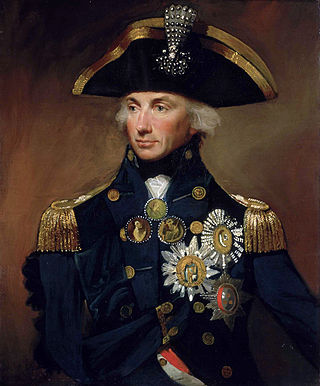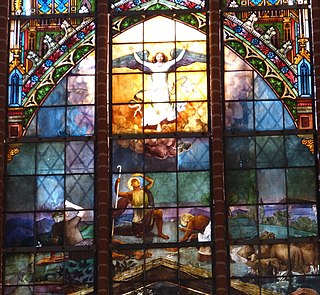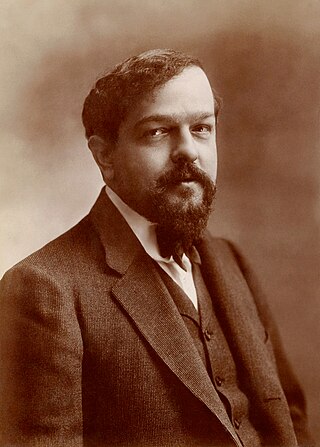Related Research Articles

The Messa da Requiem is a musical setting of the Catholic funeral mass (Requiem) for four soloists, double choir and orchestra by Giuseppe Verdi. It was composed in memory of Alessandro Manzoni, whom Verdi admired, and therefore also referred to as the Manzoni Requiem. The first performance, at the San Marco church in Milan on 22 May 1874, conducted by the composer, marked the first anniversary of Manzoni's death. It was followed three days later by the same performers at La Scala. Verdi conducted his work at major venues in Europe.

Sir John Milford Rutter is an English composer, conductor, editor, arranger, and record producer, mainly of choral music.
SATB is an initialism that describes the scoring of compositions for choirs or consorts of instruments. The initials are for the voice types: S for soprano, A for alto, T for tenor and B for bass.

Gabriel Fauré composed his Requiem in D minor, Op. 48, between 1887 and 1890. The choral-orchestral setting of the shortened Catholic Mass for the Dead in Latin is the best-known of his large works. Its focus is on eternal rest and consolation. Fauré's reasons for composing the work are unclear, but do not appear to have had anything to do with the death of his parents in the mid-1880s. He composed the work in the late 1880s and revised it in the 1890s, finishing it in 1900.

The Missa in angustiis, commonly known as the Nelson Mass, is a Mass setting by the Austrian composer Joseph Haydn. It is one of the six masses written near the end of his life that are seen as a culmination of Haydn's composition of liturgical music.
Patrick Larley is a British composer.

Agnus Dei(Lamb of God) is a choral composition in one movement by Samuel Barber, his own arrangement of his Adagio for Strings (1936). In 1967, he set the Latin words of the liturgical Agnus Dei, a part of the Mass, for mixed chorus with optional organ or piano accompaniment. The music, in B-flat minor, has a duration of about eight minutes.

Bradley Ellingboe is an American composer, conductor, and bass-baritone singer.
A Gaelic Blessing is an English language choral composition by John Rutter, consisting of four vocal parts (SATB) and organ or orchestra. It is also known by the repeating first line of the text, "Deep peace". The work was commissioned by the Chancel Choir of First United Methodist Church, Omaha, Nebraska, for their conductor Mel Olson. It was published first in 1978 by Hinshaw Music, by Oxford University Press and by the Royal School of Church Music.
Ronald Geoffrey Corp, is a composer, conductor and Anglican priest. He is founder and artistic director of the New London Orchestra (NLO) and the New London Children's Choir. Corp is musical director of the London Chorus, a position he took up in 1994, and is also musical director of the Highgate Choral Society.

Angels' Carol is a popular sacred choral piece by John Rutter for Christmas. He wrote his own text, beginning "Have you heard the sound of the angel voices", three stanzas with the refrain "Gloria in excelsis Deo". It has been part of recordings of collections of Christmas music, including one conducted by the composer.
Steven Sametz is an American conductor and composer. He has been hailed as "one of the most respected choral composers in America". Since 1979, he has been on the faculty of Lehigh University in Bethlehem, Pennsylvania, where he holds the Ronald J. Ulrich Chair in Music and is Director of Choral Activities and is founding director of the Lehigh University Choral Union. Since 1998, he has served as Artistic Director of the professional a cappella ensemble, The Princeton Singers. He is also the founding director of the Lehigh University Summer Choral Composers' Forum. In 2012, he was named Chair of the American Choral Directors Association Composition Advisory Committee.

Antonio Vivaldi made several versions of his G minor setting of the Magnificat canticle. He scored his best known version, RV 610, for vocal soloists, four-part choir, oboes and string orchestra, which also exists in a version for two groups of performers. He based these versions on an earlier setting for voices and strings only (RV 610b). His ultimate version, in which some choral and ensemble movements are replaced by five arias, to be sung by girls from the Ospedale della Pietà orphanage, was catalogued as RV 611. The concise work is well suited for use in vesper services.

The Magnificat by John Rutter is a musical setting of the biblical canticle Magnificat, completed in 1990. The extended composition in seven movements "for soprano or mezzo-soprano solo, mixed choir, and orchestra " is based on the Latin text, interspersed with "Of a Rose, a lovely Rose", an anonymous English poem on Marian themes, the beginning of the Sanctus and a prayer to Mary. The music includes elements of Latin American music.
"I will sing with the spirit" is a sacred choral composition by John Rutter. The biblical text is taken from 1 Corinthians 14:15, adding to the second half of the verse an often repeated "alleluia". Rutter scored the piece for four vocal parts (SATB) and organ, adding other versions. He composed it in 1994 for the Royal School of Church Music in England.
The Lord Is My Shepherd is a sacred choral composition by John Rutter, a setting of Psalm 23. The work was published by Oxford University Press in 1978. Marked "Slow but flowing", the music is in C major and 2/4 time. Rutter composed it for Mel Olson and the Chancel Choir of the First United Methodist Church in Omaha, Nebraska. He later included the work as a movement in his Requiem of 1985, then with orchestra or chamber ensemble. In 1993, Rutter also made it part of his Psalmfest, a collection of nine psalms written over 20 years. For that version, he used also soloists.
The "Shepherd's Pipe Carol" is a modern Christmas carol composed by John Rutter. Rutter composed the carol whilst he was an undergraduate at university in 1966 with it being published a year later at the behest of David Willcocks.

Christmas Lullaby is a popular sacred choral composition by John Rutter, a lullaby for Christmas. He wrote his own text, beginning "Clear in the darkness", three stanzas with the refrain "Ave Maria". Rutter scored the piece for four vocal parts (SATB) and piano, adding other versions. He composed it on a 1989 commission from The Bach Choir for the celebration of the 70th birthday of their conductor David Willcocks. It was first performed at the choir's Christmas concert at the Royal Albert Hall in London, an event that Rutter knew from being a member of the audience as a boy.

Trois Chansons, or Chansons de Charles d’Orléans, L 99 (92), is an a cappella choir composition by Claude Debussy set to the medieval poetry of Charles, Duke of Orléans (1394–1465). Debussy wrote the first and third songs in 1898 and finished the second in 1908. He premiered the piece in 1909 and Trois Chansons is his only composition for unaccompanied choir.
"For the beauty of the earth" is a sacred choral composition by John Rutter, a setting of the hymn of the same name by Folliott S. Pierpoint. The work was published by Oxford University Press in 1980. Recorded several times, it has been described as "one of Rutter's more popular, enduring anthems".
References
- 1 2 "John Rutter / The Lord bless you and keep you". Oxford University Press. 1981. Retrieved 11 January 2014.
- 1 2 3 4 5 Grimshaw, Jeremy. "John Rutter / The Lord Bless You and Keep You, for chorus & orchestra". Allmusic . Retrieved 11 January 2014.
- 1 2 "The Lord Bless You and Keep You". hymnary.org. Retrieved 23 May 2018.
- ↑ John Rutter / The Lord bless you and keep you / SA vocal score (F major). Oxford University Press. 1992. ISBN 9780193415218 . Retrieved 11 January 2014.
- 1 2 David Willcocks, ed. (1981). Oxford Easy Anthems. Oxford University Press.
- ↑ "John Rutter Workshop" (PDF) (in German). Hyperion. 2013. Retrieved 11 January 2014.
- ↑ "Gloria / The sacred music of John Rutter". collegium.co.uk. Retrieved 11 January 2014.
- ↑ "30th Anniversary Series / John Rutter (b1945) / Requiem & other choral works". Hyperion. 2010. Retrieved 11 January 2014.
- ↑ Rutter, John (1997). "John Rutter / Requiem" (PDF). Hyperion . Retrieved 11 January 2014.